Naked in Australia
This week we have a special show from Perth in Western Australia. Chris Smith finds out whether importing nitrogen fixing legumes could hold the answer to Perth's poor soil fertility and Victoria Gill heads out on a scientific fishing trip to see how Black Bream stocks could give us an insight into the health of estuaries. Plus could gardens hold the answer to preserving the native plants of the Kimberley? In the news, the first measurement of the magnetic field of a black hole, how squid skin could help us hide from infra red cameras and what can David Beckham tell us about playing the piano?
In this episode
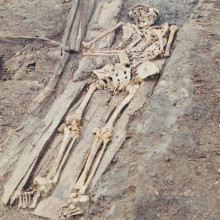
01:26 - Forensic archaeology
Forensic archaeology
Kate - I don't know whether you watch Time Team, but essentially, Tony 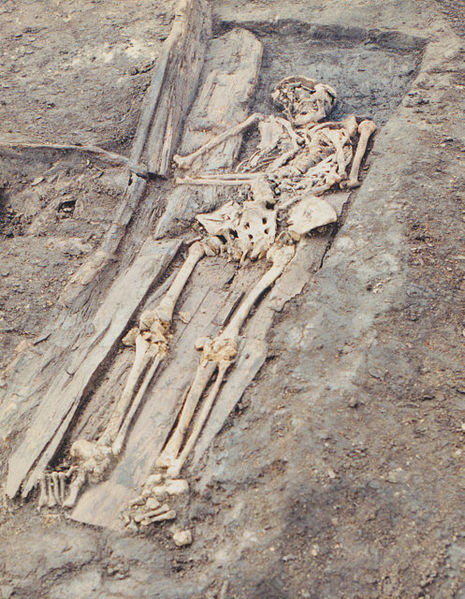 Robinson turns up in your back garden and finds a bit of a wall that's meant to be part of a 15th century monastery or something. But also, with a lot of those archaeological programmes, you see them uncovering skeletons, human remains from as far back as the middle ages and earlier.
Robinson turns up in your back garden and finds a bit of a wall that's meant to be part of a 15th century monastery or something. But also, with a lot of those archaeological programmes, you see them uncovering skeletons, human remains from as far back as the middle ages and earlier.
Now, if you've ever seen them uncover a skeleton, you see them brushing away the soil, slowly uncovering the bones before lifting them out. These bones can tell us a lot about how the person lived, what they looked like, how tall they were, and illnesses that they suffered. But you never look at the soil, that's wheelbarrowed away and chucked away somewhere. What some scientists in Denmark are saying this week however, is that that's the wrong thing to do. That soil can actually also tell us a lot about how the humans lived and died.
So, when we die and we're buried, our body and the soft tissues rot away and we're left with the bones. But what they're saying is that all the chemicals and the organic compounds in our tissues go into the soil. A lot of these react with the soil around it or get washed away by ground water, but some of them, in particular, Mercury which is what they're looking at, stick around. If you can find these elements in the soil where the soft tissue was and not in the other soil around it, you know that that's definitely come from the decomposed body.
Now, what Mercury used to be used for in the middle ages is a medicine. We know today that it's pretty poisonous, but it used to be given as a medicine for lots of different illnesses. Archaeologists have long been able to test people's bones to see whether they've been given Mercury. But it only tells us whether they've been given Mercury, years before their death. So, they either have or they haven't. What they can do with this new soil analysis is they can look at the specific soil around where the person's lungs used to be, where their liver used to be, and where their kidney used to be. That can tell us how recently they were given Mercury and how often.
Dominic - So, is that because the Mercury is being transported around the body and depending upon how far it's got, you know how long it's had to get through the bloodstream.
Kate - We know that poisons in our body, when they're taken out of our blood, they get left in our livers and our kidneys which are the parts of our body which clean the poisons out of our bloodstream.
So, Mercury was given as a vapour, you inhaled it, but the Mercury was actually taken out of our lungs fairly quickly, so you know if you can find a high Mercury concentration in where someone's lungs used to be, that they were given Mercury a day, a day and a half before their death.
One of the case studies that they've given is this 10-year-old child and they found that there's a very high concentration of Mercury in their kidney, showing that they were given it quite a long time ago, but also a high concentration in their lungs. So, we can presume from that that this child that had a long illness, they were given Mercury as a treatment, it didn't work. Maybe they got better for a short period of time, but then there was another event, just before they died, a day or so before, that caused them to get gravely ill and they were given a big dose of Mercury to try and get them through that. It didn't work and they died. So, this gives us in far more detail than we've ever been able to know before, exactly what happened in a few days before these people died.
Dominic - So, this is quite a radically new methodology for archaeology. You're having to preserve this soil. I guess there's always this debate over, is it better to dig something up now or do you want to leave it for 10 years until potentially, we have new and better techniques.
Kate - Yes. Well, a lot of that goes in places like China. A lot of the terracotta warriors aren't being dug up at the moment because we hope that our techniques will get better in the future. But what I think people are suggesting here is, while we can think about all the wheelbarrows of soil and information that we've chucked away over the years, if we can take samples now, as long as we keep them around, even if our techniques improve in the future, we'll be able to go back and look at them.
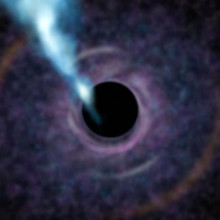
05:08 - Are black holes magnetic?
Are black holes magnetic?
Dominic - Now, a paper I've been looking at this week is about the first measurement of the magnetic field of a black hole. Now, there's actually quite a big black hole at the centre of our galaxy. This is the nearest example of a black hole to our own sun, and it weighs millions of times the mass of our sun.
Now, black holes are formed at the ends of the lives of stars. All the mass of that star just collapses down to this very dense object and nothing can then escape the gravity of that black hole. Now, we've got this, what we call 'super massive black hole' at the centre of our galaxy and that actually plays quite an important role in holding our galaxy together because you've got this tremendous amount of mass there.
Kate - So, it's got a positive effect then. I imagine black holes as these giant space hoovers that suck everything in and I imagine it would be a destructive force for our galaxy rather than a positive one.
Dominic - I mean certainly, if you get too close to a black hole, that's pretty bad news. But what the galaxy needs is lots of gravitational glue to hold all of its mass together. It's whirling around remember and if there wasn't gravitational glue to hold it together, all of this materials would just fly off into space. So, you need a lot of gravity to hold that together. But the question is, do black holes have magnetic fields and that's a very difficult question to answer because you can't see magnetic fields. You've got to look for some physical phenomenon which is affected by magnetism.
Kate - Why do we think black holes might have magnetic fields?
Dominic - Well, we think stars have quite strong magnetic fields. Our own sun for example has quite a strong magnetic field and that's what create sunspots and much of the really violent structure we see on its surface.
It was seem odd to imagine that when stars like the sun collapse, that magnetic field is just going to go away, but if these black holes have magnetic fields, that's actually quite important for how they behave with their environment. Because if you've got materials spiralling in to a black hole, that material gets very hot and it enters the state that we call 'ionised material'. It starts to glow red hot. The protons and electrons are stripped apart, and then those charged particles feel magnetic forces. So, if this black hole has a strong magnetic field, that's going to affect how the charged materials is falling into it. If we want to understand how black holes suck up material from their environment, we need to understand those magnetic fields that will really produce quite a strong force on the environment.
Kate - So, how do you measure it then? Do you have to send in some sort of satellite on a suicide mission to get close enough to measure it before it gets sucked in?
Dominic - I mean, the problem is that the centre of our galaxy is tens of thousands of light years away. So, it's a very difficult environment to go and probe, but if you can find a physical phenomenon which is affected by magnetism, you can look at how that phenomenon changes in the region of the central part of the galaxy.
Now, the technique that Rolf Ito used in his paper in Nature this week, was look at stars called 'pulsars' which are formed at the ends of the lives of stars. They're very compact and they produce beams of radiation out of their magnetic poles. Those beams of radiation, it so happens, are polarised. This is like when you wear Polaroid sunglasses and light can oscilate in two different directions and you're only letting through light that oscilates in one direction. But if that light then travels through a medium where there's A) a magnetic field and B) lots of charged particles, yhis is basically the environment you have around a black hole then that plain polarisation starts to rotate, it's an effect called faraday rotation. By looking at how much it's rotated, you can tell how much magnetic field was there.
Now, until recently, we haven't been able to find any pulsars which are really close to the centre of a black hole. Probably could have so much stuff there. It's actually quite hard to see what's going on, but this team at the Max Planck Institute in Bonn have now found a pulsar and they've got very strong evidence, it seems to be very close in to the centre of the galaxy. And so, they've looked at the light of this pulsar. Looked at the faraday rotation of its light and from that, they've inferred this black hole actually has quite a strong magnetic field. And now that we've got a number on that black hole, we can refine our models much better and how materiat behaves spiralling into that black hole. And so, we can understand how black holes accrete material from their environment much better.
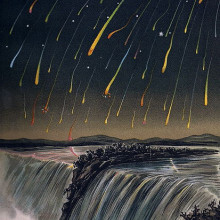
09:31 - Quick Fire Science: Meteors
Quick Fire Science: Meteors
Stargazers have been peering at the night sky all this week looking for shooting stars as the annual Perseid meteor shower has reached its peak. But what are shooting stars, and what's the best way to observe them? Here's Dave Ansell and Alex Parkyn-Smith with this week's Quick Fire Science...
- Shooting stars are flashes of light in the night sky that move rapidly and usually last for no more than a second or two.
- They appear when pebble-sized pieces of space rock collide with the Earth.
- The pebbles themselves are much too small to see, but as they enter the Earth's atmosphere they heat up and ionise the air around them, creating a glowing fireball.
- This heat arises because of the tremendous speed that the pebbles are travelling at - on impact - tens of kilometres each second, and much faster even than satellites in orbit around the Earth.
- Shooting stars can be seen every few minutes on any night...
- But at certain times of year many more are seen, as the Earth travels through trails of debris left behind by comets.
- Meteors that appear during these showers appear to shoot out of a particular direction in the sky, because they are all travelling in the same direction along the comet's orbit.
- Meteor showers each have unique characteristics that depend upon the size and speed of the debris left behind by particular comets.
- The Perseid meteor shower is one of the best known, because it reliably produces around 80 meteors an hour, and many are very bright.
- If you're going out to observe, you don't need any special equipment. Just find a comfortable spot, stare at the sky, and wait.
- But don't forget that it takes a few minutes for your eyes to adapt to the dark. Find the darkest place you can, and if the Moon's up, try to hide it behind a building.
- If you're really lucky, you might see a fireball...
- Exceptional meteors that can be as bright as the Moon and leave glowing trails behind them that persist for up to a minute!
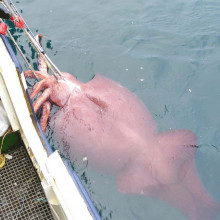
11:38 - Invisibility with squid skin
Invisibility with squid skin
Using a protein from colour-changing squids, US scientists have created a coating that reflects infrared and lets objects mimic the infrared signature of their surroundings. The developers of the coating say that it could be used to create camouflage that would make people and vehicles invisible to infrared cameras.
Conventional visual camouflage can help the wearer blend in to the background, but it is notoriously difficult to hide from infrared sensors. 'We're trying to develop something that you could essentially use as reconfigurable infrared reflective paint so that you'd be able to disguise yourself,' says Alon Gorodetsky from the University of California, Irvine, who led the research. 'There's really not much out there in terms of inexpensive, biodegradable non-toxic materials that can be changed on the fly.'
The team turned to some of nature's best camouflage artists - the cephalopods - for inspiration. Pencil squids, for example, have specialised skin cells that can reflect both visible light and infrared, thanks to a protein called reflectin. Layers of reflectin-containing cells act like flexible mirrors which reflect different wavelengths of light. By contracting their muscles, the squids can change the shape of these cells which allows them to change colour.
The team used thin films of reflectin to make a stripped down mimic of squid skin, which they deposited onto glass slides. They then investigated how different substances could chemically alter and 'tune' the film's structure and reflective properties.
'You can swell these types of film and get them to shift their colouration,' explains Gorodetsky, 'so we screened different stimuli to see how far we can actually shift it across the visible and infrared spectrum.'
They found that exposing the film to acetic acid vapour caused it to swell enough to reflect infrared radiation, allowing it to 'disappear' when viewed with an infrared camera. The technology is still at an early-stage, but Gorodetsky thinks it shows promise as a next-generation camouflage coating. 'It hits the range that you would typically use for an infrared imaging camera, so in a proof of concept experiment it works.'
The next challenge, he says, is to find a more user-friendly trigger. 'You wouldn't necessarily want to use acetic acid - it's effectively dousing yourself with very concentrated vinegar!' he says. 'We'd like to find another stimulus - perhaps something mechanical or electrical - to induce the same change in colouration.'

15:48 - Coarticulation in piano playing
Coarticulation in piano playing
Kate - So, what can David Beckham tell us about playing the piano? 
Dominic - I'm not sure he's a very natured concert pianist you see.
Kate - Well, I don't know if his keyboard skills are as good as his free kicks, but in this case, it's all about his name. And that's because David Beckham is a really good example of coarticulation. Now, that's something that we find in speech, where basically, we change the sounds that we produce based on the sounds that have come just before and just afterwards.
So, if I say his two names separately, David and Beckham, you can hear that I say a 'D' on the end of David like they should be. But if I say his whole name together, David Beckham, I'm actually saying Davib Beckham. I'm missing off the 'D' and doing a 'B' instead. Do you have a go at home, listen very, very carefully. Slow yourself down and see what actual sounds you're producing and you will find that you're actually mispronouncing it. But we don't notice it because we're so used to it. Essentially, our muscles are trying to move so fast that we're ahead of ourselves by the time that we start to pronounce the sound.
So, we've known for a really long time that this happens in our speech, but what scientists of Minnesota have done is they've had a look at ten piano players - some of them amateur and some of them professional. They've asked them to play 14 pieces of music for them. While they've been playing, they've been measuring a couple of things - how hard they've been hitting the keys, how closely they stick to a metronome, to a timing device. And also, they've been putting electrodes on their hands to look at the muscle activity.
They've been finding that as they play the piano, they do exactly the same thing. They use coarticulation and how they play the notes depends on the notes that have come just before and just afterwards. So obviously, if you're changing how hard you're hitting the notes or fluency or the rhythm with which you're playing it, you play the notes in a slightly different way. So that means if you're plodding along playing the piano, sometimes you learn just by pressing the individual keys one after another and tt doesn't quite sound like the tune that you're trying to play at home. You're trying Green Sleeves and it's sort of sounding a bit ploddy. Now, that's probably because you're not doing the same coarticulation that piano players are when they become fluent. You're playing the notes individually with exactly the same force and the same rhythm, and playing them together adjusts the way play it, makes it sound more fluent.
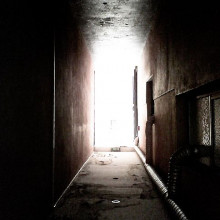
18:06 - How do near-death experiences arise?
How do near-death experiences arise?
with Jimo Borjigin, University of Michigin
In past times, if your heart stopped beating, that probably meant that you 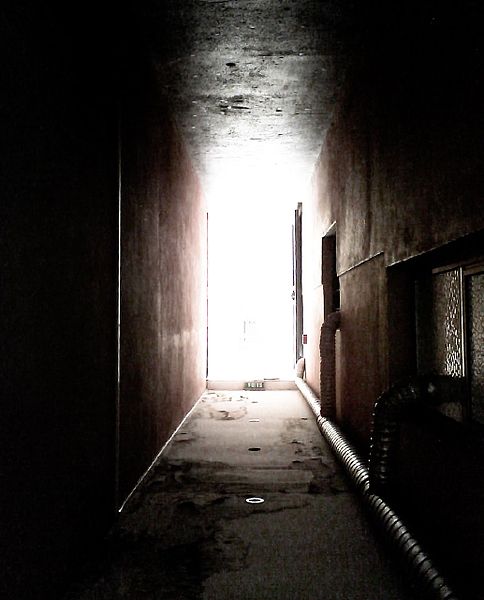 wouldn't live to tell the tale. But modern medical techniques mean that many heart attack patients survive, and those who've been that near to death often say that they experience bright lights or other strange phenomena. Until now, doctors have struggled to understand why, but Jimo Borjigin looked into the question in a paper in PNAS this week.
wouldn't live to tell the tale. But modern medical techniques mean that many heart attack patients survive, and those who've been that near to death often say that they experience bright lights or other strange phenomena. Until now, doctors have struggled to understand why, but Jimo Borjigin looked into the question in a paper in PNAS this week.
Jimo - In the literature, what I find is 10% to 20% of cardiac arrest survivors had their near-death experiences. There are various kinds. They are not all identical, but there are some common threads such as seeing bright light. But I even think that that number is underestimation because a lot of people are afraid to speak up about their experiences. They're afraid to be ridiculed. They're not convinced this is really a supernatural, but yet, even science hasn't provided any answers. I might be biased, but I think our study might be really the first attempt and then I'm sure, many more will follow.
Kate - How do you go about investigating near-death experiences because obviously, when a human is having a near-death experience, we've normally got other things to worry about than measuring their brain?
Jimo - That's right. eah, if I know if somebody is about to have near-death experiences, first instinct is to save them rather than to stick electrodes in their brain. So, I think to do that kind of studies for individuals with a cardiac arrest is really tough. Unless you know somebody is going to have a pre-scheduled brain operation and we could perhaps give them EEG, electrode recording, just in case that patients, when they wake up, they'll report some kind of near-death experiences. I think those might be the kind of more feasible studies one could perform in the future, if there are sufficient number of patients who actually are available for neurosurgeons to gather data from.
Kate - So, until we can get those human subjects, what subjects did you use in this study and how did you go about looking at this phenomenon?
Jimo - Well, rodents are standard animal models for our studies, whether it's rats and mice and that is just the reality of today's scientific research. So, what we did was just give them anaesthetics and make sure they're not sensing any pain. We gave them lethal injection to the heart to stop the heart. During this whole time, we monitor their brain activity by placing 6 electrodes in distant parts of the brain and the results were all published in the paper.
Kate - And far from the brain going quiet after death, it actually became quite active.
Jimo - Exactly. So, that's what we were actually really surprised to find measurable activities. We were predicting maybe something comparable to the levels we would see when an animal is awake. But what we were really surprised by is how high those activities were. In fact, they're 5 to 8 times higher during the near-death state than the waking state.
Then I really remember that in the human near-death experience, one of the very common description of experience, is they're realer than real, hyper vivid, hyper lucid. I mean, to the patients who experienced that, they seem to be extremely real. I think that realness of that perhaps is reflected by these measures that we provided and that is still not clearly confirmed. We need many scientists to get involved in these kind of studies, so we have a more advanced understanding of this phenomena.
Kate - Was any particular areas of the brain involved in this activity, like if someone saw a bright light, was the vision at the parts of our brain involved in this activity?
Jimo - Well initially, since we hear a lot about bright light, my first instinct was, "Their visual cortex must be highly activated." In fact, maybe visual cortex is the only part that is activated and that's what I thought naively initially. But I was surprised by how the entire brain seems to be participating in this amazing event, the electrical oscillation, not just occipital areas which is the visual cortex.
There is a unique sequence of events that every single animal demonstrates. There's different frequency at the different time period during this 30-second cardiac arrest. So initially, a very narrow band of high frequency activities and then eventually, it culminated really in the highly activated and not only in terms of the power density, but it's also in the coherence which is the synchronised firing of distant parts of the brain, mainly in the gamma range. Gamma actually expand a huge range in this case, anywhere from 20 to 25 hertz, all the way up to 250 hertz that were investigated in our studies.
Kate - Does this activity tell us anything about why these near-death experiences might happen? Some of us might presume that if the brain is going without oxygen, it would just shut down very quietly. Do we know why? s the brain having like a last hurrah or a last gasp before it runs out of oxygen?
Jimo - Yeah, I saw that comment, but I think perhaps since we see it in rats and I predict we're going to see that in humans in the future, my guess, this is really brain's built in defence against lack of oxygen, lack of glucose. We all know that a brain is very plastic. So, if you do something to damage the brain, to injure the brain, brain actually mounts a defence against that injury and insult. So, I think this is perhaps one built-in mechanism against external threats and if there's a lack of oxygen or glucose, maybe just one of the ultimate threat to brain survival.
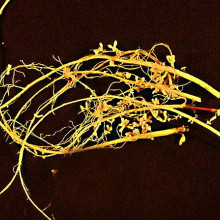
25:12 - Importing Legumes to Australia
Importing Legumes to Australia
with John Howieson, Murdoch University
A major priority for western Australia is sustainable food production. Faced with some of the worst soils of the world and the changing climate, scientists here are investigating how to improve soil fertility by growing legumes that put nitrogen into the ground. Most native legumes here are laced with toxins, so animals including sheep can't eat them. But it's not just a simple case of bringing in dessert-adapted species from other countries...
John - I'm Professor John Howieson. I'm at the Centre for Rhizobium Studies at Murdoch University. The end game of our research is sustainable food production. We focus on food production from legumes which are a very special group of plants that take nitrogen out of the air and with the help of bacteria in the roots called rhizobium, break the closely-bonded atoms of nitrogen gas and turn them into protein. And so, to deliver sustainable agricultural production in infertile soils, the overwhelmingly best way is through legume cultivation, along with the right rhizobia, the bacteria in the roots, and that's what we do inside this glass. See if you'd like to come and have a look, Chris...
Chris - Let's do it.
John - We're exposed here very heavily to a changing climate. One of the most important impacts is the rain is falling in different times of the year and in different amounts at those times, and it's actually affecting our legume growth. One of the things we're doing here is trying to select new legumes that are already adapted to those changing environmental circumstances. We've collected them from environments around the world that we think we are transitioning towards, Chris. We're collecting the rhizobia that goes with them and screening both of those components for adaptation to the western Australian environment. In this glasshouse, we do experiments where we match particular strains of rhizobium and give it to the plant which is the legume.
Chris - So, you can't just have any old rhizobial bacteria with any old plant then.
John - No. It's a very sophisticated genetic relationship between legume and rhizobium, so you have to get those two sets of genes perfectly together to fix this nitrogen into proteins in the roots.
Chris - So, if I take a plant from one country and move it to Australia, because the bacteria that it needs in the soil to grow in that environment are not in Australia, it's not going to grow. Is that what you're saying?
John - Well, that's exactly right, Chris. Although Australia has a high number of legumes, their rhizobia are completely incompatible with most of the food legumes that are found elsewhere in the world. So, when we bring legumes into Australia and try and domesticate them or try and grow them, we have to bring the rhizobia in as well. And then we're faced with the really big challenge of matching that rhizobia to the soil that the whole farming system is going to be put into.
Chris - Because the bacteria are fussy. If you put them in the soil, they don't necessarily like it.
John - Absolutely. most of the soils in this state are the worst soils in the world in terms of being infertile and able to hold water, and able to hold nutrients. It's a very difficult background to introduce new bacteria into. Most of the legumes that have been developed around the world for agriculture have been developed in more fertile soils. So, they struggle when they get to western Australia and so do their rhizobium.
Chris - So, are you then trying to find a combination of bugs that will go well with the plants and will go well with the soil? Is that the challenge?
John - That's exactly the challenge because when you start with the bugs, not all of them have the genetic machinery to fix nitrogen perfectly. So, we have to first screen the bugs for those that are capable of high levels of nitrogen fixation. Once we've got a cohort of those bugs, we then take them to the field and over a period of several years, we look at how well they can persist and colonise our soils, year-in, year-out.
Chris - So, talk us through these experiments because you have a whole raft of plants growing in front of us, some of which look healthier than others.
John - This is actually an experiment, trying to match a strain of rhizobium that will fix nitrogen optimally with these bean plants. We have a pot of very infertile soil we have added all the nutrients that we need for the legume growth except nitrogen, and we've added different strains of the rhizobia to select the ones that are going to fix nitrogen best. We move over here to the right, many of these pots, whole beans that are rather short. They're yellow. Their leaves are dropping off. They're going brown. That's a symptom of a poor rhizobium in symbiosis with this particular bean. On your left here Chris, you can see some really dark green beans. They're healthy. There's not a spot on them. They've got a very good strain of rhizobium. Let me show you what these look like - pull one of these plants out of the pot. You can see these big round blobs on the roots, about the size of a thumbnail. That's a nodule. Now, I'm going to scrape that nodule open with my fingernail, and you'll see inside that nodule, a beautiful red piece of plant tissue that actually looks like a nice steak. It's that red.
Chris - It does.
John - Well, that red is leg haemoglobin. It's the same sort of protein that we have in our blood called haemoglobin and it carries oxygen. The enzyme that the bacteria uses to break that tightly-bonded nitrogen molecule is sensitive to oxygen.
Chris - So, the plant soaks up all the available oxygen using that leg haemoglobin.
John - Yes. This bright red leg haemoglobin soaks up the oxygen out of the air and trickles it back into the nodule where it's used by the rhizobium for respiration, but it's in not in great enough quantity to denature the nitrogenised enzyme.
Chris - And if I were to zoom in on this nodule with a microscope, where would the bacteria be?
John - Okay, so the bacteria are located in special pockets called symbiosomes that the nodule cell forms specifically for the rhizobium. So, once you have this genetic conversation between rhizobium and plant working well, the symbiosome will develop and form a beautiful little house for the rhizobium that then becomes a nitrogen production factory.
Ron - Just mind yourself on this fence. It's to keep the bandicoots out and the rabbits out of the plot area. My name is Ron Yates and I'm from the Department of Agriculture and Food in Western Australia. We're at the back of Murdoch University. This is our little trial plot and this is where we test some of our legumes that we brought from overseas.
Chris - What are we looking at?
Ron - What we're looking here is Lebeckia Ambigua. It's a perennial legume from the Western Cape of South Africa. It's very interesting to us because it comes from a dry, arid environment and we think it has potential to grow in Western Australia.
Chris - Very thin spindly stems, very low leaf area, looks like a thing I would describe as a succulent with nice yellow flowers on the top in long thin spears.
Ron - Yes. Just the habit of the plant, it looks very crowd-adapted, thin leaves, so less transpiration and less water loss from the plant. Most of the growing points under the ground which makes it very adaptable to grazing pressure - mainly sheep in Western Australia.
Chris - Were I to put a fork into the ground and I'm not going to do that, don't worry. And dig this up. What would I see?
Ron - What you'd see is this big tap root, at least 3 meters.
Chris - Three meters! It's not a very big plant.
Ron - No, but most of its energy in the first 2 years goes into its root system.
Chris - This is I suppose a metre across. How much nitrogen can that fix?
Ron - One ton of effectively nodulated legume is equivalent to 65 kilograms of urea or in another way is, 20 units of nitrogen.
Chris - To put that another way, to make fertilisers artificially, it has a very high carbon cost. We have to use fossils fuels, don't we, so there must be a carbon-saving of doing this.
Ron - Yes, the artificial way of making nitrogen, 1 ton of fossil fuel makes 1 ton of urea. That's least a lot of emissions of particular CO2.
Chris - You're doing field trials with this now. When are we going to see this going out there into the wheat belt and enriching land for farmers so they're not spending they're not spending their hard-earned cash on boosting the carbon dioxide level of the atmosphere.
Ron - It all depends. We'd probably have to get a company onboard to produce the seed and then there'd be another company that produces the inoculant, and then the next thing is cost, and the farmers would have to say that it is cost-effective to grow this plant.
Chris - What about the environmental impact because no country knows the cost of bringing in things from overseas better than Australia? This is a sort of double whammy because it's a non-native species and you're also rearing bacteria which are not going to be natural bacteria that would naturally be in the soil. They're bacteria that are right for this plant, aren't they?
Ron - Yes. There's lots of hurdles in getting plants and their bacteria into Australia. Luckily, we've gone through these hurdles for this plant. The big problem that we do worry about is it, coming a pest or a weed. This plant has ticked the box that we believe and they believe that it's not going to become a problem.
Chris - Ron Yates and before him, Murdoch University's John Howieson.
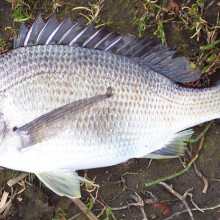
35:07 - An Estuary Health Check
An Estuary Health Check
with Joel Williams, Murdoch University
Perth sits very close to the coast, right on the estuaries of its two rivers, and where seawater meets freshwater, the environment is extremely dynamic for the fish that live in the estuary, and ultimately, for the people who want to catch them. A team of researchers from Murdoch University is studying one of the most prized and relied upon estuary catches, black bream. They're tagging and tracking the fish to find out what happens to them as the amount of freshwater decreases. As years of drought continue across Australia, this work could show how we can expect these environments and the animals that live in them to respond. I joined the team on a scientific fishing trip in the Perth suburbs...
Victoria - So, I'm standing on the boat ramp, looking at the beautiful wide Canning River, looking like a mill pond at the moment. It's a gorgeous afternoon and I'm with Joel Williams from Murdoch University. What exactly are we going to do today?
Joel - So today, we're going to take the boat out. We're going to go about 500 meters upstream in the Canning River and we're going to do some seine netting to collect black bream.
Victoria - Why black bream in particular? Why is this species of such interest to your research?
Joel - Well, such unique species - black breams are a member of the Sparidae family. It's unique in that it completes its entire lifecycle within an estuary, and it's also, a highly popular fish with recreational anglers, they like to target and eat them. Today, we're going to be going out tagging some new fish. We haven't tagged that many fish yet because it's the start of the programme, but there's every chance we may get to tag fish.
Victoria - Okay, so let's take the boat out and get going.
Joel - Very well. That's the first time it's ever not started.
Victoria - Take two.
Joel - During the day, they're probably sitting either in the deeper waters, deep than 2 meters so they're hanging around snags or trees or reeds and then during dusk, they come out into the sand flats and into the shallows to start feeding. That's obviously when the best time to go fishing is, that's where we're at now.
Victoria - It's a perfect landing. Okay, Joel, so we've stopped by the bridge and there is a tiny little beach. So what's special about here that you think it might be good to catch fish?
Joel - So, this is one of our seasonal sampling sites that we come to each season. We were here early in the week. We know we caught some fish here, so hopefully, we're going to catch some fish again. What we have is a 40-meter seine net which is a net that we start in the shore and then using the boat, we take the net out as far as we can and then do a big arc, two people hauling that in and hopefully, we'll have some bream that we'll be able to tag. Okay, so let's pull it up. As you can see, we've got some fish.
Victoria - How many do you normally get in a net this size?
Joel - The last time, I think we got about sixty bream and probably about thirty sea mullet as well.
Victoria - It's the mullet that are jumping. We can see that here.
Joel - Its the mullet that are jumping. The smart ones are jumping over the net.
Victoria - So, what have we got?
Joel - So, that's a black bream here. We've also got the sea mullet which some people love to eat as well, and then we've got a toad fish, what's making the hissing sound.
Victoria - The big flat ones are the black breams.
Joel - The ones that are your stereotypical fish shape and silver colour, that fish shape, they're the black bream. The one slender ones, they're the sea mullet then the toad fish or they look similar to the puffer fish that you may have seen on Finding Nemo - the ones that puff up. These toad fish do the same too. They puff up as well and make funny sounds. Basically, what we're trying to find out is how these fish are using the estuaries. The Swan Canning Estuary is quite a large estuarine system. By tagging the fish, the fish gets captured either by us or by recreational fishermen. We can tell whether that fish is moved over time.
Victoria - And what do you find out by their movement?
Joel - So, we're particularly interested because estuaries are - the end users are freshwater flow, so they're particularly vulnerable to climatic events such as drought, flooding, particularly climate change. So, Australia has gone through a large period of drought especially in western Australia here. It's incredibly dry. We've been getting dramatically less freshwater flowing into our systems. So, the whole biophysical structure of the estuary is changed. The salinity is changed, the dissolved oxygen has changed, and so basically, we want to know how these fish are moving throughout the systems under these changed conditions. It can also helps us predict how future climate change may impact the distribution and how these fish are swimming around the estuaries.
Victoria - So, what happens now?
Joel - So basically today, we're going to use what we refer to as T-bar tags. We have a tagging gun which is actually the same tagging gun that retailers use to put price tags on clothes. That annoying little plastic thing that you try and bite off with your teeth, basically, that's the same thing we're inserting into the fish. It makes a really good anchor into the muscles of the fish. The tags contain a unique fish number and our phone number, so if somebody catches the fish, they can call that number. They can tell us the ID of that fish and if that fisher man releases the fish again and it gets tagged, we can follow where it's moved. So first thing, we measure the fish because if the fish gets re-captured, we want to measure it again to see how much it's grown. So, this fish 300 (mm), take the fish with a firm grip so that doesn't kick, and then this is the dorsal fin here. What we do is we stick the needle with the tagging gun just underneath the scales and we actually remove one scale and then we go back in. just like giving an injection, we go in in a 45-degree angle, insert it and you can feel a go between the thin rays, pull the trigger, and then remove the needle, and then the tag.
Victoria - And that's it. They have just got that little ID number on the...
Joel - I can feel it's secure there and as least protrusive position as possible just underneath the fin there and the fish should swim away happily ever after.
Victoria - Have you gathered information from this particularly species that shown you how they are responding to environmental change and particularly to climate change and the drought that's been going for so long in Australia?
Joel - Yes, I've actually originally came from Melbourne University where I recently completed my PhD and as a part of that project, we did a similar study using what we call acoustic telemetry, acoustic tags. That's where we surgically implant a transmitter that's about the size of a AAA battery and then we placed receivers throughout the estuary. And so, we can basically know exactly where those fish are in any given time throughout the year. What I found is that freshwater flow was so low due to the drought that saline water had moved a long way upstream and so had the fish.
Victoria - So, apart from changing where these fish are and then maybe changing where the recreational fishermen want to catch them, what other larger effects could that be having on the ecology of this estuary?
Joel - The fish especially during the spawning season are moving upstream. Upstream, the river channel is a lot smaller which means that the area of spawning habitat is potentially reduced. Previously, there may have been spawning in the estuary basins where you have this basically large lakes which increase the size of the spawning area.
Victoria - So, they're essentially being funnelled by the water conditions, changing and pushing them upstream into a smaller area.
Joel - Exactly. There's other impacts such as, with less freshwater flow, the amount of dissolved oxygen which is crucial for fish to survive, particularly at early stages such as the egg and larval stage, if we don't get freshwater flow then we have these deeper pools of water that become really anoxic come quite toxic to living.
Victoria - You're looking particularly at the bream in this study, but are they sort of a signal species for what's happening at a larger environmental scale and to other species?
Joel - Absolutely. In southern Australian estuaries, they're the ideal fish, but there are many other species such as the King George whiting, cobbler, tailer, snapper that all move into these estuaries. These are all fish that we like to eat. They're good table fish and these are particularly fish that are vulnerable to the effects of climate change in anthropogenic or human disturbances.
Victoria - We've been here. We tagged a good few fish and you're now going to get the fishermen involved and hopefully, you get a lot of these tags and really get some movement patterns. What do you want to do with all of that data? What's the next step in this study?
Joel - So, the Swan Canning river s=which we visited today is only one of our estuaries that we're interested in. We actually have 7 estuaries spread out through western Australia, from north of Perth, all the way down to the southwest corner. All these estuaries have different biophysical structures and they're all going to be impacted be climate change and drought in different ways. So, what we're aiming to do is collate all these data and start making predictions of how factors such as salinity, dissolved oxygen, estuary types and how climate change is going to impact on the biology and ecology of these fish. This data can now be used by fisheries managers and catch men managers to help manage this fish species and protect that into the future.
Victoria - So, I guess you've got a lot more bream to tag in order to generate that big data set, so I better let you go.
Joel - No worries. Thank you very much.
Victoria - Joel Williams there from Murdoch University.
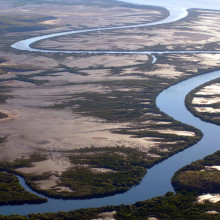
44:15 - Native plants in the Kimberleys
Native plants in the Kimberleys
with Sabrina Hahn
Sabrina Hahn is a renowned gardener who works with some of the people in 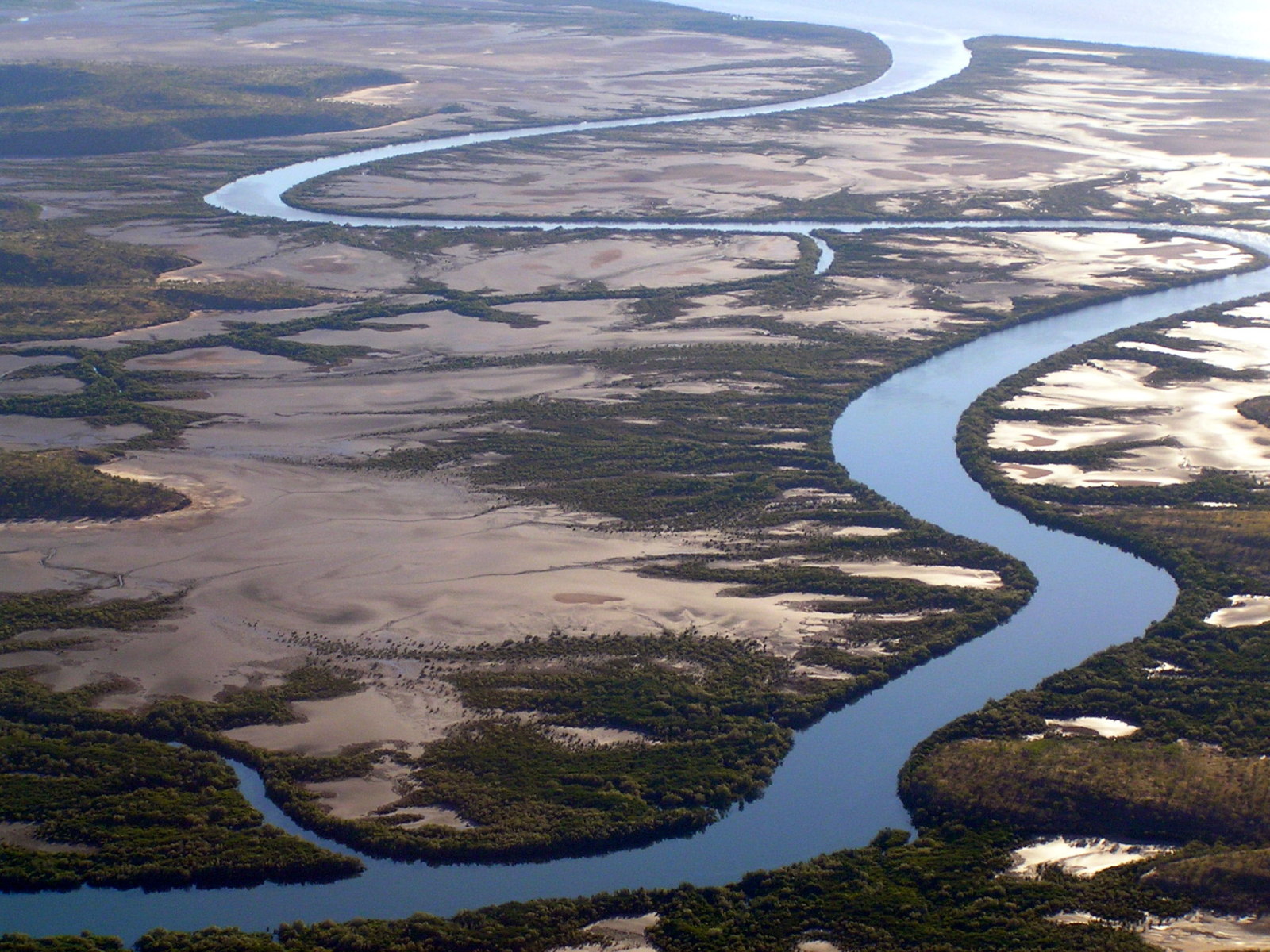 Australia who live closest to the land, the indigenous communities of the Kimberley in the vast and truly remote region of north-western Australia where communities are regularly cut-off when dirt roads are flooded in the wet season.
Australia who live closest to the land, the indigenous communities of the Kimberley in the vast and truly remote region of north-western Australia where communities are regularly cut-off when dirt roads are flooded in the wet season.
Victoria Gill spoke to Sabrina about her work creating vegetable gardens which aim to preserve and build on the knowledge of native edible plants and the traditional bush tucker.
Sabrina - I guess for me, it's a sharing of knowledge and getting hold of that knowledge of the elders before it's actually lost. So, I share my knowledge of growing western vegetables to improve the health of the children. They share their knowledge of the food that they used to use constantly and go out and harvest.
We know that unless the young children in these communities have access to fresh food particularly the green vegetables, that it really affects their long term health. But what's emerged now with the collection of their bush tucker foods is, they've discovered just how high those foods are in proteins and vitamins. So, that's an essential part of their diet. Of course culturally, the women and the children go out bush and they used to walk for miles and miles, and harvest the food and then bring it back to the whole community. So, the intention of the vegetable gardens is to share the food in the same way that culturally, they share all their bush tucker food. So, we have actually incorporated both the bush tucker and western food like all the greens and tomatoes. So, it's a real - the food gardens are now a conduit into culture.
Victoria - Can you describe some of the types of vegetables that you can grow in that environment and that are native to that landscape?
Sabrina - There's a white currant bush which is a bush that just gets thousands of white little berries on them. There's another tree called the gubinge tree which has 60...
Victoria - The gubinge tree.
Sabrina - Yeah gubinge.
Victoria - That's a great word.
Sabrina - It has 68 times more vitamin C than oranges and the kids absolutely love that. There's another one called Marule and it's like a little native plum, like a small fruiting plum. We did this cross cultural cooking where we'll use the fruit from the gubinge and put it in stir fries with the mud crab because it's almost like a tangeriny tart flavour. It's great in cooking.
Victoria - Talking about cooking. Can you share your favourite cross-cultural recipe with us?
Sabrina - I think mud crab would have to be my favourite recipe. We use chillies, but there's a lot of tamarind trees that grow around. They're not native, but they grow around the area. So, with a little bit of tamarind seed and the nuts from the gubinge tree and then you add the marule, the black plum at the very, very end which is a little bit like an olive I suppose. It gives this really tangy, sort of Asian flavours and there's a native lemon grass that grows all through there, and it has the most beautiful subtle lemon flavour and that's gorgeous in fresh fish.
Victoria - Sounds delicious. I want to try it. While we've been here at the National Science Week, we've been talking to quite a few researchers and one thing that keeps coming up when we talk to people that work outdoors in the environment here in western Australia is the drought. How much environmental change have you seen whilst you've been working out there?
Sabrina - It's really noticeable and I know that lots of the older people I talk to in communities say that the wet season is changing. The timing of the wet season is changing. Because indigenous people are so culturally linked to country, they can understand that when there's a difference in the wet season, it actually changes the time when the bush tucker comes on and it also is affecting the oceans.
So, they know when the dugongs and turtles come through. That time is changing now, so it's having an impact, not only on the fruiting of their traditional bush tucker plants, but also, what's happening in the oceans. So, traditionally when certain wattles, are at a certain time of flowering, the oysters are the best for eating. But what's happened now is they're finding that many of the oysters are actually opening up and dying, and no one knows why, and the wattles are flowering much, much later. So, it's having a really big impact.
Victoria - So, as that changes, I guess the way that people who have always lived with the land very closely to the land and known its environment so, so well, that's all having to change too. So, how do you see your role as somebody that studies the landscape, and works within the landscape, how do you see your role changing as the environment shifts?
Sabrina - I think my role now becomes very important to collect as many different species as we possibly can to bring them into community and to actually water them and fertilise them. So, we actually have a base of plants that are there so that we can tissue culture some of these plants or we can grow them on hot beds in nurseries in their hundreds because eventually, it will of course have an effect on the very few plants that are left. So, we need to increase that base of plants so we've got the diversity that we can keep the species going.

50:22 - Could diamonds be mined in space?
Could diamonds be mined in space?
Hannah - So, diamonds from the ancient Greek, meaning unbreakable. They're formed naturally around the earth's centre where the high pressure and temperatures cause bonding between electrons of carbon atoms. This gives rise to the rigid lattice crystal carbon structure of diamond, which then travels to the earth's surface during volcanic eruptions, delivering us with the transparent, extremely hard material we know as diamond. But could other planets produce similar substances? For the answer, we turn to Director of Research and Development at Deep Space Industry's Dr. Stephen Covey.
Stephen - You might expect that silicon, just below carbon in the periodic table and also with 4 bonding electrons would form equivalent structures. But silicon atoms are much larger than carbon atoms and don't pack as closely and this form softer molecules. Nitrogen has a smaller covalent radius than carbon and under super high pressures, over a million atmospheres, solid nitrogen changes from a hexagonal lattice into a cubic lattice, similar to diamond, and might have similar or even greater hardness. But it's difficult to beat diamond as a hard mineral. This is due to the way the carbon atoms are linked together, resulting in the highest packing density of any known substance at room temperature and pressure. But there may indeed be other ultra hard materials formed at extremely high pressures. In February of 2009, a paper in Physical Review Letters reported that worksite structured boron nitride may be 18% harder than diamond and then another carbon mineral, lonsdaleite is 58% harder than diamond. In January of 2013, the journal Nature reported the production of ultra-hard nanotwinned cubic boron nitride by researchers from the University of Chicago, which also appeared to be harder than diamond. So, if the conditions are right then harder minerals than diamond may indeed be formed in the depths of large planets. Whether or not they are stable enough to be brought to the surface without reverting to softer forms, is another question altogether.










Comments
Add a comment